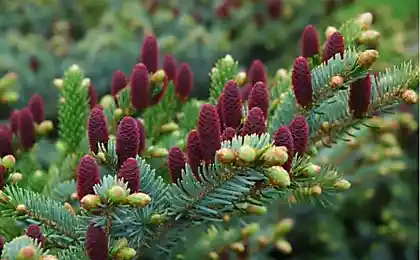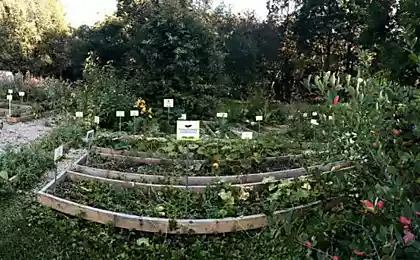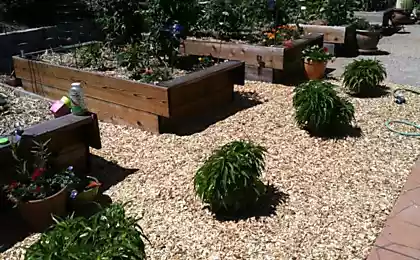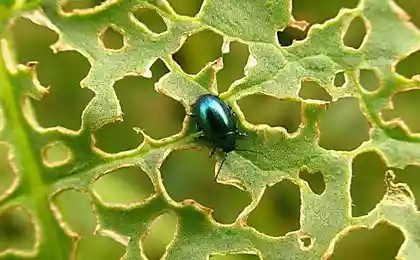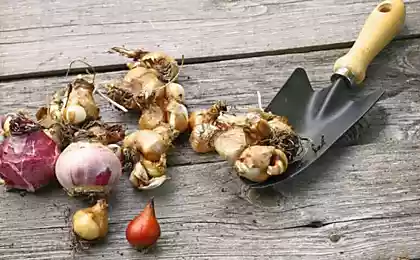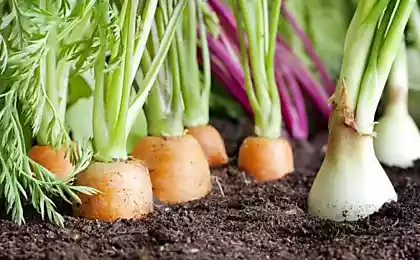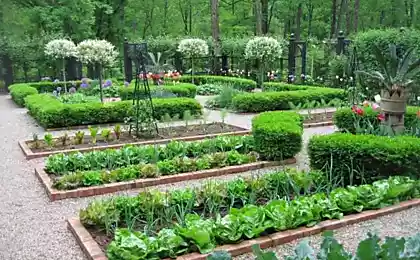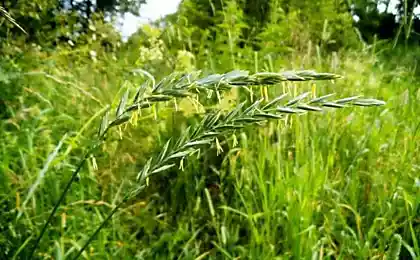443
Mixed planting in Your garden for pest control without chemicals

A study of mixed plantings of different types of vegetable and aromatic plants for many years managed to establish some interesting patterns. Typically, the spread of pests or infection is snowballing from one plant to another. But mixed plantings the rows of plants from different families create natural barriers.
Growers found that the mass distribution of pests is hampered by the diversity of plant species as they are difficult search of the host plant. Many insects are looking for food and suitable breeding of plants by smell. There are many aromatic garden plants that can scare or mislead, making it difficult to find the "right". Moreover, with the denser placement of smaller plants, the soil surface remains open, which hinders the spread of those pests that lay eggs on the ground.
Planting carrots and onions
Combines medicinal plants with vegetable or fruit practiced for a long time. The most striking example is the sowing of carrots for onions. Carrots deter the onion fly is a dangerous pest of onion, but onion — carrot fly, the worst pest of carrots. There are good results of planting marigolds around the berry bushes, and around Apple trees to deter Codling moth, a pest of currants and gooseberries; on the planting of marigolds or calendula for potatoes to repel the Colorado potato beetle.
Of course, all the pesky insects (especially mosquitoes and flies) or pests (Colorado potato beetle) will never disappear completely, no matter what you put in your garden. But to reduce their number. Moreover for aromatic herbs is not necessary to allocate a lot of space. A bold, castor oil plant, planted near the porch or on the lawn in front of the house, accentuate the beauty of summer evenings in the open air — it repels mosquitoes. If you put it near wetlands, the breeding of mosquitoes may slow down.
Marigolds for repelling Codling moth
Tansy repels not only mosquitoes but also flies, in the heat of summer becomes a real disaster. Furthermore, flies don't like root, but to put it should be careful: in Sunny weather, contact with its leaves can cause severe skin irritation. Flowers nasturtiums repel whitefly, Colorado potato beetle, caterpillars of cabbage butterflies.
Plants, insect repellent odor, can be attributed to the category of plant-insect repellent (repellent). Wormwood repels ants, cabbage and carrot fly, Apple fruit moth, flea beetles, whiteflies. Tansy reduces the damage of the vegetables earthen flea beetles and cabbage caterpillars of cabbage butterflies.

Mixed planting to create natural barriers
Garlic repels larvae of the cabbage fly and Codling moth. Tobacco, mint, Rue, tansy, wormwood medicinal and bitter, Catnip deters flea beetles. Catnip and nasturtium does not like green peach aphids and marigolds — some species of nematodes. Mint not only do not like ants, and whiteflies. If you put cut mint at the entrance to the cellar or pantry, it will protect the food from invading ants.
Colorado beetle scare marigolds, Catnip, coriander, nasturtium, onion, tansy, horseradish, beans, vegetable, white dead-nettle. Try to plant their Islands among the potato rows. Aphids don't like the smell of most aromatic herbs, for example, various Korovnikov and mint and also chives, onions, garlic, marigolds, mustard, coriander, fennel. To not have to fight with the ant hills, pouring them with boiling water, and even some chemistry in the garden you can plant wormwood or garlic.
Cabbage and marigolds
Mulch from leaves and oak bark stop slugs, caterpillars, podgryzayuschie shoots, and larvae of the garden chafer. It is recommended to scatter on sidewalks and narrow strips — in the beds. Borage, or Borago, it is recommended to be sown between rows of cabbage of all types. It reduces the damage by caterpillars, and his rough hairy lower leaves repels slugs and snails. Overseeding dill to the cabbage reduces the number of cabbage aphid. When you use aromatic herbs for protective purposes should not forget about the competition between plants. To grass from growing and will not overpower the main crop should be sown a few patches in its ranks or on the edges of the beds in the form of edges.
Aromatic plants have long served as a natural household cleaning agent, disinfectant and mosquito repellent. Home mole scare the leaves of wormwood, rosemary, sage, lavender and mint. And they are most effective in a dry form, and they can be used not only in the country but also at home, and prepare for the winter fragrant sachet.
published
Source: www.sadovoda.ru
Sweet marjoram — a wonderful condiment not only
Horizons of utopia: 10 the manifestos about the future


